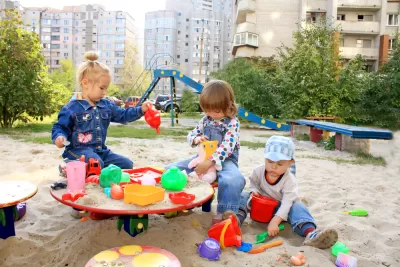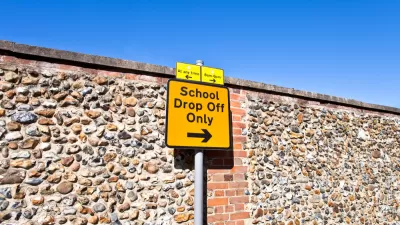Millennials are loving their center cities these days, with their lofts and bars and yoga studios. But what happens when Millennials start to have families and don't quite fit, physically or culturally, into city life anymore?

For all the effort that has gone into making cities attractive to young residents, far less effort has been spent on the question of how to keep them. This issue motivated an extended research project by urban planner and architectural designer Sarah Snider Kommpa. Kommpa recently completed a tour of 11 cities in which she tried to discern the urban-to-suburban migration patterns and to compile recommendations for how cities can remain attractive once middle-class Millennials become parents. She summarized her work in “Downtown Families: Discovering How Cities Support Urban Family Living”.
Here are excerpts from Kommpa's Q&A with Next City's Alexis Stephens:
"Upper-class families with kids can choose to live in the city regardless and there’s a breaking point there. If you can afford private school and live downtown, then you can do that and that doesn’t matter. On the other end of the spectrum, folks living in subsidized housing don’t have a lot of choice about where to send their kids to school — depending on how the local district does choice, whether it is neighborhood-based schooling or open enrollment....Certainly some families are going to say, 'I’m going to move where I know the school system is good,' but there are a lot of parents getting involved in more urban schools to change that from the bottom up. That’s one of the trends that I saw while traveling."
"From a developer’s perspective, they can get more per square foot for smaller units than they can for larger units. Unfortunately when folks go in and design their buildings, they’re using market studies that are a few years old. They’re not thinking long-term about retaining those renters when they get married and have kids."
FULL STORY: What Happens When Millennials Age Out of Micro-Lofts?

Trump Administration Could Effectively End Housing Voucher Program
Federal officials are eyeing major cuts to the Section 8 program that helps millions of low-income households pay rent.

Planetizen Federal Action Tracker
A weekly monitor of how Trump’s orders and actions are impacting planners and planning in America.

Ken Jennings Launches Transit Web Series
The Jeopardy champ wants you to ride public transit.

California Invests Additional $5M in Electric School Buses
The state wants to electrify all of its school bus fleets by 2035.

Austin Launches $2M Homelessness Prevention Fund
A new grant program from the city’s Homeless Strategy Office will fund rental assistance and supportive services.

Alabama School Forestry Initiative Brings Trees to Schoolyards
Trees can improve physical and mental health for students and commnity members.
Urban Design for Planners 1: Software Tools
This six-course series explores essential urban design concepts using open source software and equips planners with the tools they need to participate fully in the urban design process.
Planning for Universal Design
Learn the tools for implementing Universal Design in planning regulations.
Ada County Highway District
Clanton & Associates, Inc.
Jessamine County Fiscal Court
Institute for Housing and Urban Development Studies (IHS)
City of Grandview
Harvard GSD Executive Education
Toledo-Lucas County Plan Commissions
Salt Lake City
NYU Wagner Graduate School of Public Service





























